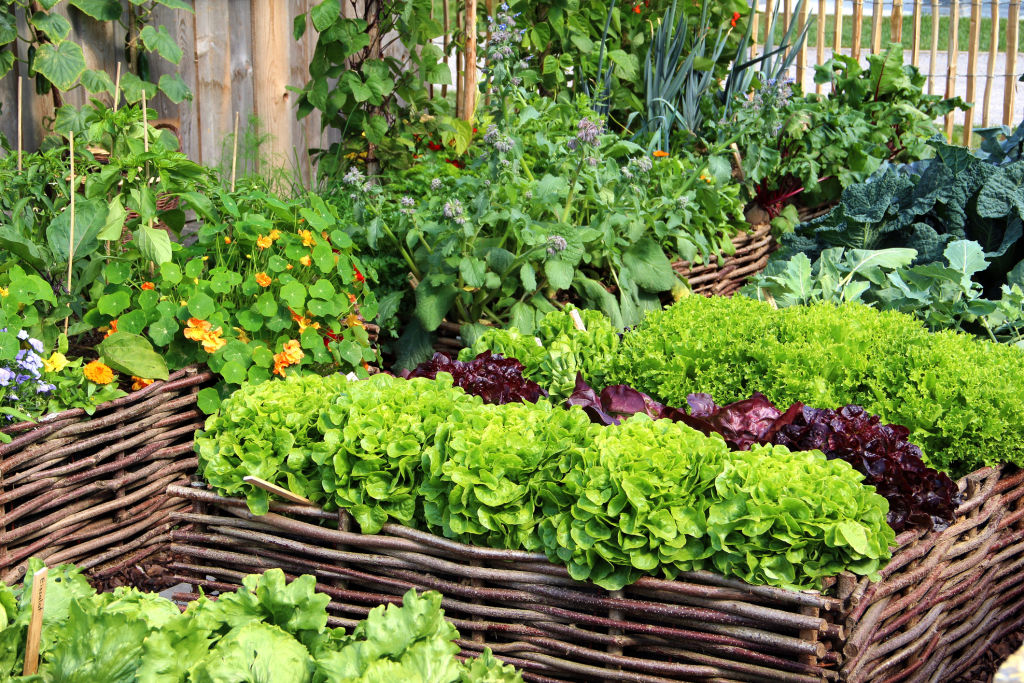
Gardens are sanctuaries where nature and human creativity merge to create a tranquil, beautiful, and productive space. Whether you have a small backyard or an extensive landscape, the principles of keeping a garden, growing crops, and making it aesthetically pleasing are universally applicable.
1. Garden Maintenance
Before you start growing crops or enhancing aesthetics, it’s crucial to establish a strong foundation through effective garden maintenance. Here are some key steps:
a. Soil Preparation:
Healthy soil is the cornerstone of a successful garden. Test your soil to determine its pH and nutrient levels, and amend it accordingly. Incorporate organic matter like compost and well-rotted manure to improve soil structure and fertility. Well-prepared soil provides the right conditions for plant roots to thrive.
b. Weeding:
Regular weeding is essential to prevent unwanted plants from competing with your crops for nutrients and space. Use mulch to suppress weed growth and maintain moisture levels in the soil.
c. Pest and Disease Management:
Monitor your garden for pests and diseases. Employ natural remedies and organic pesticides when necessary to protect your crops. Encourage natural predators like ladybugs and lacewings to help control pests.
d. Watering:
Proper watering is crucial for plant health. Invest in a drip irrigation system to provide consistent moisture without wastage. Water in the morning to prevent fungal diseases and minimize evaporation.
e. Pruning and Thinning:
Regularly prune and thin out overgrown or crowded plants to ensure adequate air circulation and sunlight. This helps prevent disease and promotes healthy growth.
2. Growing Crops
Once your garden is well-maintained, you can focus on growing a variety of crops. Here’s how to do it effectively:
a. Crop Selection:
Choose crops that are well-suited to your climate, soil type, and the available space. Research the specific requirements of each crop, including sunlight, water, and temperature needs.
b. Crop Rotation:
To prevent soil depletion and pest build-up, practice crop rotation. Rotate crops of the same family to different areas of the garden each season.
c. Planting Depth and Spacing:
Follow recommended planting guidelines for each crop to ensure optimal growth. Planting too deep or too close can lead to poor yields.
d. Fertilization:
Provide essential nutrients by using organic fertilizers, such as compost and aged manure. Apply them in moderation and according to the needs of your plants. Avoid over-fertilization, as it can harm the environment and your crops.
e. Mulching:
Mulch around your crops to retain moisture, suppress weeds, and regulate soil temperature. Organic materials like straw, wood chips, or leaves work well.
f. Regular Monitoring:
Keep an eye on your crops for any signs of stress, pests, or diseases. Early detection allows for timely intervention.
g. Harvesting:
Harvest your crops at the right time to ensure the best flavor and nutritional value. Different crops have various indicators of readiness, such as color, size, and texture.
3. Aesthetic Enhancements
An aesthetically pleasing garden is not only a joy to behold but also a relaxing space to enjoy a fire joker. Here are some tips for enhancing the visual appeal of your garden:
a. Design Layout:
Start with a well-thought-out garden design. Consider the layout of paths, beds, and focal points like a gazebo or fountain. Symmetry and balance can create an appealing visual effect.
b. Color and Texture:
Choose a harmonious color scheme for your garden. Blend complementary colors and experiment with various textures, such as smooth, rough, or feathery foliage.
c. Plant Selection:
Select plants that have ornamental qualities. Ornamental grasses, colorful flowers, and unique foliage can add visual interest to your garden. Don’t forget about year-round appeal; evergreens can provide structure even in winter.
d. Containers and Garden Art:
Use decorative containers and garden art, like sculptures or wind chimes, to add personality and style to your garden. These elements can serve as focal points and conversation starters.
e. Pathways and Lighting:
Incorporate well-maintained pathways with attractive materials like stone or wood. Outdoor lighting can transform your garden’s ambiance in the evening, making it magical after sunset.
f. Pruning and Shaping:
Regularly prune and shape your plants to maintain clean lines and well-defined borders. Topiary and espalier techniques can create intricate and visually pleasing plant shapes.
g. Seasonal Interest:
Plan your garden to have year-round interest. Include plants that bloom or change color in different seasons, and add seasonal decorations to celebrate holidays and special occasions.


